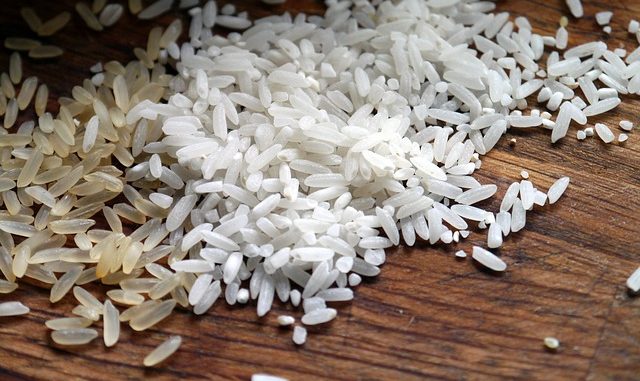
Rice is one of the key staples of the global population accounting for at least a fifth of all the carbohydrate consumed. It is especially important in Asian countries which rely on it as a source of nutrition, especially energy. There are two important forms which are regarded as probably the most healthy; brown rice and parboiled white rice. Brown rice is healthiest because of the retention of the husk which contributes fibre whilst parboiled rice is considered the most convenient to cook and use, especially in the Western world. It is often found in packs marketed as ready-to-eat rice.
Parboiled rice which I notice some others call converted rice or even easy-cook rice is rice which has been partially boiled in its own husk. It is a form of precooking and is designed to aid with further processing. A number of vegetables can be parboiled including sweet potato, potato, broccoli and parsnips.
The basic process of parboiling rice includes soaking the rice, steaming it and then drying. The soaking mixture can be salted water and may last only a few minutes. The process is not blanching where the rice is cooked and then plunged immediately into ice cold water to stop any further cooking.
The Nutrition Of Parboiled Rice
One of the key vitamins, thiamin (vitamin B1) is driven from the bran into the endosperm during parboiling. As a result, parboiled white rice is 80% nutritionally similar to brown rice. Niacin is also found to a greater extent in this type of rice compared to ordinary cooked rice. The level is about 4 mg/cup of rice which equates to 23 percent of the recommended daily intake. A cup of cooked parboiled rice also contains 41 grams of total carbohydrate which is a third of the recommended daily intake of 130 grams.
One of the other major changes to the rice composition is the alteration to starch. The starch is slowly gelatinized during the steaming part of the process. The grains become more transparent, lose their stickiness and so are more separated when they are finally cooked.
Parboiled Rice Fortification
The technique has been around for many years and is highly effective in a nutritional sense especially when fortifying brown rice with both iron and folic acid (Wahengbam et al., 2019). Even if rice fortification is not followed, parboiling helps improve the nutritional readiness of vitamins and minerals and changes its texture. Over the half the world’s production of rice is now parboiled. It is a process followed in many countries especially India and most associated countries of that region.
Parboiling has also been extended to milled rice.
Parboiled rice does not produce a spike in insulin release when carbohydrates enter the blood stream. The glycemic index (GI) of parboiled rice is lower than raw rice with a range of between 56 and 69. These values are associated with a low to intermediate GI content.
Parboiling Rice
- Rinse uncooked rice in a sieve or colander.
- Bring a saucepan of clean, cold water to a rolling boil.
- Add a small amount of salt – about a pinch should do so that the rice will boil at a temperature above 100 Centigrade at atmospheric pressure (sea-level).
- Add the rice to the water and boil for 4 or 5 minutes.
- Drain away and cool.
The parboiled rice can be stored frozen in ziplock bags in the freezer. It is an ideal base for soups, stews and curry. In most cases about 2 tablespoons of water in added to the bag and heated in a microwave for 1 minute to 1.5 minutes. It should be thoughly heated through.
Reference
Wahengbam, E.D., Das, A.J., Green, B.D., Shooter, J., Hazarika, M.K. (2019) Effect of iron and folic acid fortification on in vitrobioavailability and starch hydrolysis in ready-to-eat parboiled rice. Food Chem., 292 pp. 39-46 (Article)
Leave a Reply